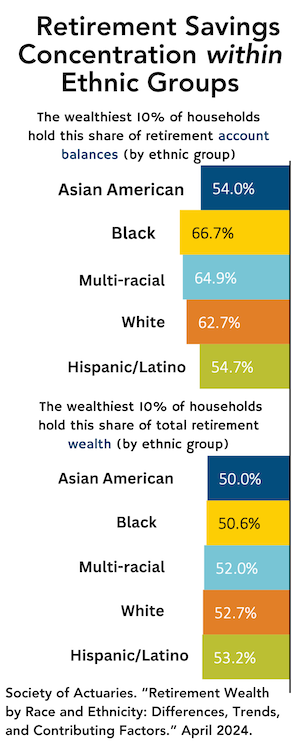
It’s one thing to create an income plan for high net worth retirees, and it’s something else to show them why the plan makes sense and to persuade them that it’s right for them. Retirement advice demands technical skill, psychology and salesmanship.
Michael Kitces (right) probably knows as much about turning that triple play as anybody. Speaking at the Retirement Income Industry Association spring conference in Chicago last month, the advisor/researcher/writer showed how he calculates the right “safe withdrawal rates” for retired couples and why they embrace his recommendations.
 Most of Kitces clients aren’t in any real danger of running out of money. Economizing after a bad year would mean flying first class instead of chartering a private jet, according to one example he used.
Most of Kitces clients aren’t in any real danger of running out of money. Economizing after a bad year would mean flying first class instead of chartering a private jet, according to one example he used.
In other words, his clients don’t have to get too fancy with flooring techniques or life annuities or holding big reserves that don’t generate any return. Their retirement egg is big enough so they can afford to live on a conservative withdrawal rate, like the safe, all-weather 4% rate that Bill Bengen proposed 20 years ago.
The 4% withdrawal rate (adjusted annually for inflation) is therefore the basic chassis that Kitces builds his income strategies on. But here’s where it gets interesting. Kitces uses factors specific to each retiree or to the prevailing market environment to dial the withdrawal rate up or down by a fraction of a percent. Because of its precision and uniqueness—or the appearance thereof—clients reportedly love it.
A host of adjustments
Kitces adjusts his recommended initial withdrawal rate up or down based on these factors:
- The fees that the client will pay.
- The client’s tax burden.
- Desire to preserve (all or part of) principal as a legacy or a cushion against longevity risk.
- Life expectancy or planning horizon.
- Diversification in the client’s portfolio.
- The client’s flexibility vis-à-vis spending levels.
- Equity valuations an interest rates at the start of retirement.
- Use of tactical asset allocation (to take advantage of market opportunities).
Here are Kitces’ rules-of-thumb (based on a slew of research) for quantifying those factors in terms of withdrawal rate adjustments:
- Every one percent of fees reduces the safe withdrawal rate by 0.30%.
- A moderate tax burden (15% capital gains tax and a 25% income tax rate) reduces the withdrawal rate by 0.50%.
- The shorter the time horizon, the greater the safe withdrawal rate (SWR), and vice-versa. The SWR for a 20-year retirement is 1% more per year than the SWR for a 30-year retirement. The SWR for a >40-year time horizon is 0.5% less than that for a 30-year retirement.
- Equity diversification beyond the S&P 500 (into small caps, international stocks, etc.) can support an SWR 0.5% higher than Bengen’s rate, which he based on an allocation of 60% of assets to an S&P 500 index fund.
- The client’s willingness to lower or raise his annual withdrawal amount by 10% if his effective withdrawal rate goes up or down 20%, respectively, can raise the initial withdrawal rate to 5.2% from 4%.
- Higher risk tolerance can raise the withdrawal rate by as much as 1%.
- The advisor’s ability to use tactical asset allocation can justify a 0.20% increase in the withdrawal rate.
- If the market’s average P/E ratio is above 20 at the start of retirement, the initial withdrawal rate should drop by 0.5%. If the average P/E ratio is below 12 at the start of retirement, the initial withdrawal rate can rise by 0.5%.
- To preserve principal or leave a legacy equal to the starting capital, the client should reduce his withdrawal rate by 0.20%.
A hypothetical client
How does Kitces apply those principles to a specific client’s situation? At the RIIA conference, he offered the hypothetical of a conservative couple in their late 60s with a 25-year planning horizon, who pay fees of 1.2% (which are assumed not to be offset by the advisor’s skill-premium, or “alpha”).
This imaginary couple was expected to have a moderate tax burden (15% on capital gains and 25% on the rest of their income), a desire for principal preservation, moderate tolerance for risk and moderate flexibility with respect to annual income. Equity valuations and interest rates are historically moderate when their retirement begins.
Based on those conditions, here’s how Kitces would present his initial withdrawal rate recommendation to them:
|
Base withdrawal rate |
4.0% |
|
Negative adjustments |
|
|
1.2% fees |
-0.4% |
|
Moderate taxes |
-0.5% |
|
Legacy/longevity hedge |
-0.25% |
|
Positive adjustments |
|
|
25-year time horizon |
0.5% |
|
Significant diversification |
0.75% |
|
Some spending flexibility |
0.5% |
|
Moderate equity valuations, int. rates |
0.5% |
|
Tactical asset allocation |
0.2% |
|
Final withdrawal rate |
5.3% |
A compelling story
Selling financial advice, like any kind of selling, is often about creating a compelling story, and Kitces has had a lot of success with this story. It’s as if he assessed you and your car and said, “Based on your reflexes and visual acuity, your car’s horsepower, the stopping power of its brakes, the depth of your tire tread, and the weather conditions, you can drive at 58 mph (or 62 mph or 71 mph or whatever) on a stretch of the autobahn where the average person on an average day should drive at 60 mph.”
When advice is present in that way, it’s harder to ignore. “It’s an incredibly powerful anchoring tool,” Kitces said at the conference. He also described this approach as an effective “behavior modification” technique that comes in handy at those awkward moments when he has to tell clients to cut down their spending for a while.
There’s a certain false precision to his adjustments—but that’s OK in the real world. They’re based partly on assumptions, averages, history, projections, and subjectivity, in addition to higher math. They are arguably not much more than rules of thumb. Kitces acknowledged that, for instance, it’s difficult to say whether the adjustments are truly additive or not.
But, for the purpose of setting an initial withdrawal rate, the ability of the numbers to inspire confidence in the client is the main thing. During retirement, after all, you can tinker with the withdrawal rate to make it more sustainable. If things get bad enough, you can suggest an annuity.
At the RIIA conference, Kitces was asked whether he recommends using a “glide-path,” where the client’s bond allocation rises over time. Perhaps because the 4% withdrawal rate is conservative to begin with, he doesn’t believe in retirement “glide paths.”
“Downward equity glide paths in retirement don’t help very much. While it’s OK to take equity exposure off over time, it’s better to do it when you rebalance and sell winners,” he said. “You get a higher sustainable withdrawal rate.”
© 2013 RIJ Publishing LLC. All rights reserved.


